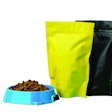To appeal to the concerns of many petfood purchasers in the US, the claim "Made in USA" or similar verbiage, often accompanied by a depiction of the American flag, is not uncommon on petfood labels these days. Neither the US Food and Drug Administration (FDA) nor the Association of American Feed Control Officials (AAFCO) has any regulations or expressed policies regarding use of the claim. Rather, the only written guidance offered on the matter is that by the Federal Trade Commission (FTC) (see business.ftc.gov/documents/bus03-complying-made-usa-standard).
While this guidance has been available for a number of years now, the need for petfood labels to meet the criteria set forth by FTC has only recently become more than an academic exercise. In the past few months, at least one state feed control official has begun asking petfood registrants for documentation of compliance with FTC guidance. Thus, for those petfood companies wishing to make the claim, it is prudent to obtain and keep adequate documentation on hand before some regulator asks for it.
Regarding country of origin labeling of imported food (including petfood) items, FDA works cooperatively with US Customs and Border Protection (CBP) in enforcement of the latter's regulations (Title 19 of the Code of Federal Regulations Part 134, see www.fda.gov/ICECI/ComplianceManuals/CompliancePolicyGuidanceManual/ucm074567.htm).The CBP regulations require that labels identify the country of origin unless there is a "substantial transformation" of the food in the US before distribution to the public. The example used is with shrimp. If the shrimp is imported from another country, and once in the US is only subject to repacking with minimal processing that does not change the character of the food (e.g., peeling, deveining), the label must still say "Made in ___" or "Product of ___."
However, if once in the US the shrimp is incorporated into a substantially different food product, such as shrimp quiche, no such label statement, either in regard to the shrimp itself or to the product as a whole, is required by law. In other words, as much as some consumer advocates may like to see otherwise, unless and until there is a change in the law the label of a domestically manufactured product, regardless of sources of ingredients, does not have to bear any country of origin statement.
However, even if the hypothetical shrimp quiche was produced in a facility located within US borders, that fact alone does not wholly meet the criteria set forth by FTC to substantiate a "Made in USA" or similar claim (at least, not without further qualification). Further, an implied claim, such as an American flag, a map of the US or vague references such as "true American quality" would be considered similarly deceptive if the geographical site of the manufacturing facility was the only factor in play. Rather, in addition to the product being physically produced in the US, FTC dictates that "all or virtually all" ingredients in the product also must be of US origin (and not just purchased from a US company that imported the ingredient itself).
In other words, the product must be of "negligible foreign content" to be worthy of the claim. Also, in determining percentage of US vs. foreign content not only must the relative amounts by weight be considered, but also the relative costs. So, even if only a small proportion of a product consists of foreign-sourced ingredients, if they constitute a major fraction of the expense of manufacturing that factor needs to be considered, as well.
Unfortunately, FTC does not give quantitative guidance as to what it considers "negligible" foreign content. The guidance is intended to cover all commercial goods, such as washing machines, cell phones, etc., not just foods and petfoods, so it is decidedly vague on that point. So, what does FTC mean by "virtually all" when it comes to petfoods? Ninety-five percent? Ninety-nine percent? FTC doesn't provide any premarket review of claims, so it is difficult to say. I haven't heard what criteria feed control officials might use in determining what would be more than "negligible" foreign content, either.
As a rule, most commercial "complete and balanced" petfoods are going to contain a small amount of foreign content in the form of trace nutrients that are not commonly manufactured in the US. By either a weight or cost basis, that is still most often going to be a minor contribution to the total product, so in my opinion the claim would probably survive regulatory scrutiny (though I can't promise that would always be the case).
However, what about products that contain meat like lamb, or fish or shellfish of many species that are harvested outside of the US borders by non-US fishing operations? Many tropical fruits and vegetables, items like tapioca and green tea extract, etc., are likely going to be foreign-sourced, too. It would depend on the formulation, but I would guess that in many cases the above ingredients are going to be in the product at levels above what FTC would consider "negligible."
In those cases, though, FTC does provide for "qualified" claims. As long as the claim is sufficiently clarified as to geographical origin of ingredients (e.g., "American Made with New Zealand Lamb"), it still likely would pass regulatory muster. Regardless, it is important for US petfood manufacturers to consider all of these factors before immediately slapping "Made in USA" on the label.


















